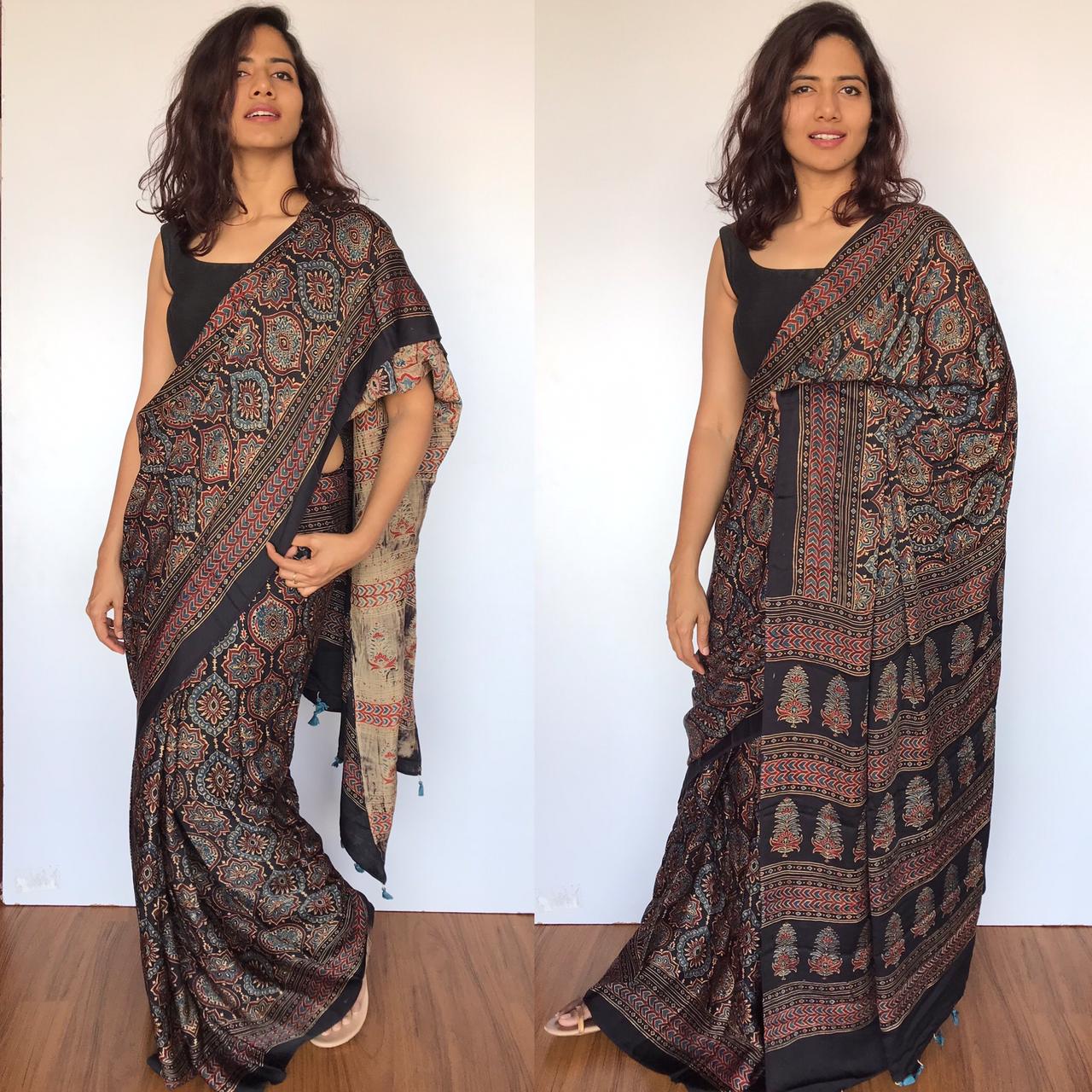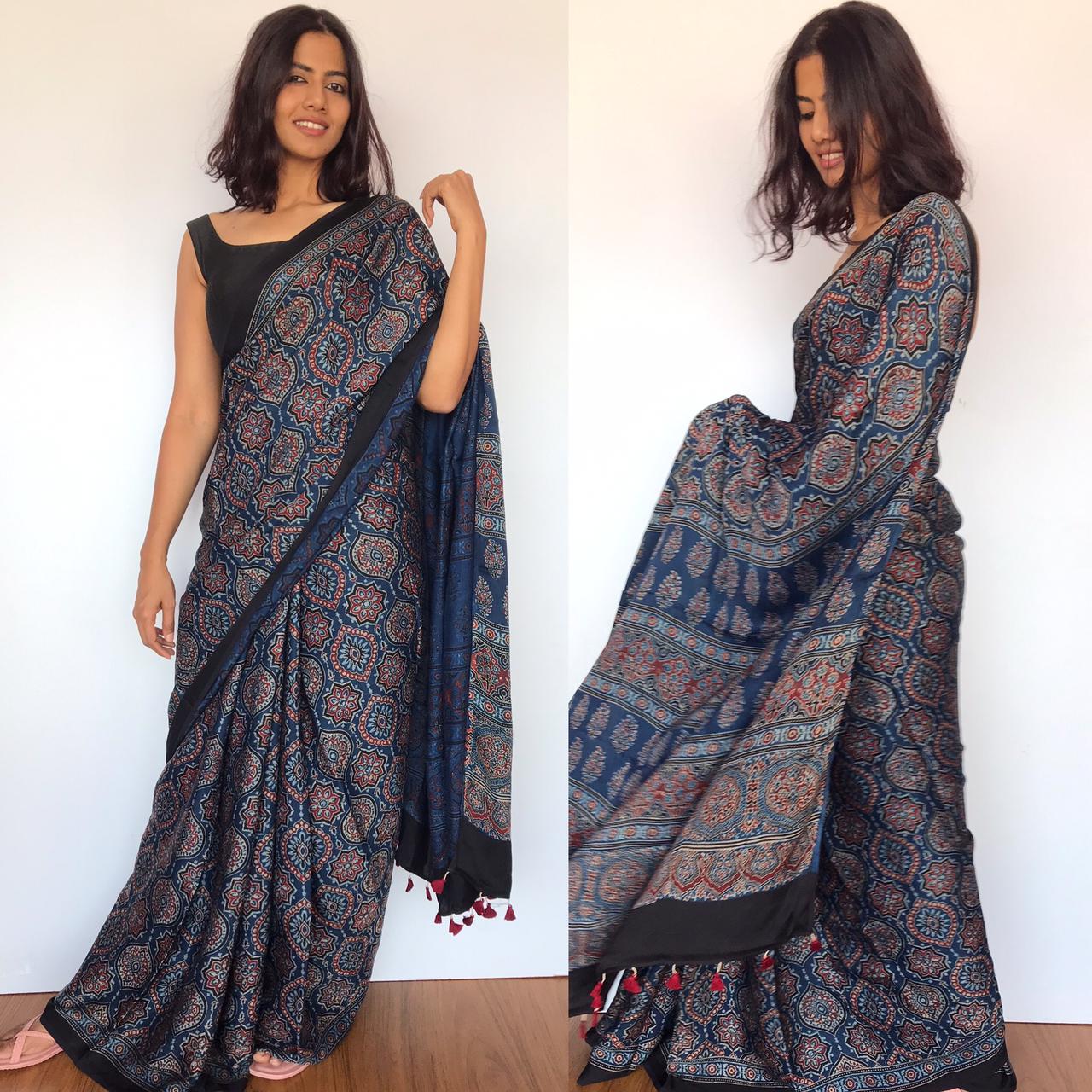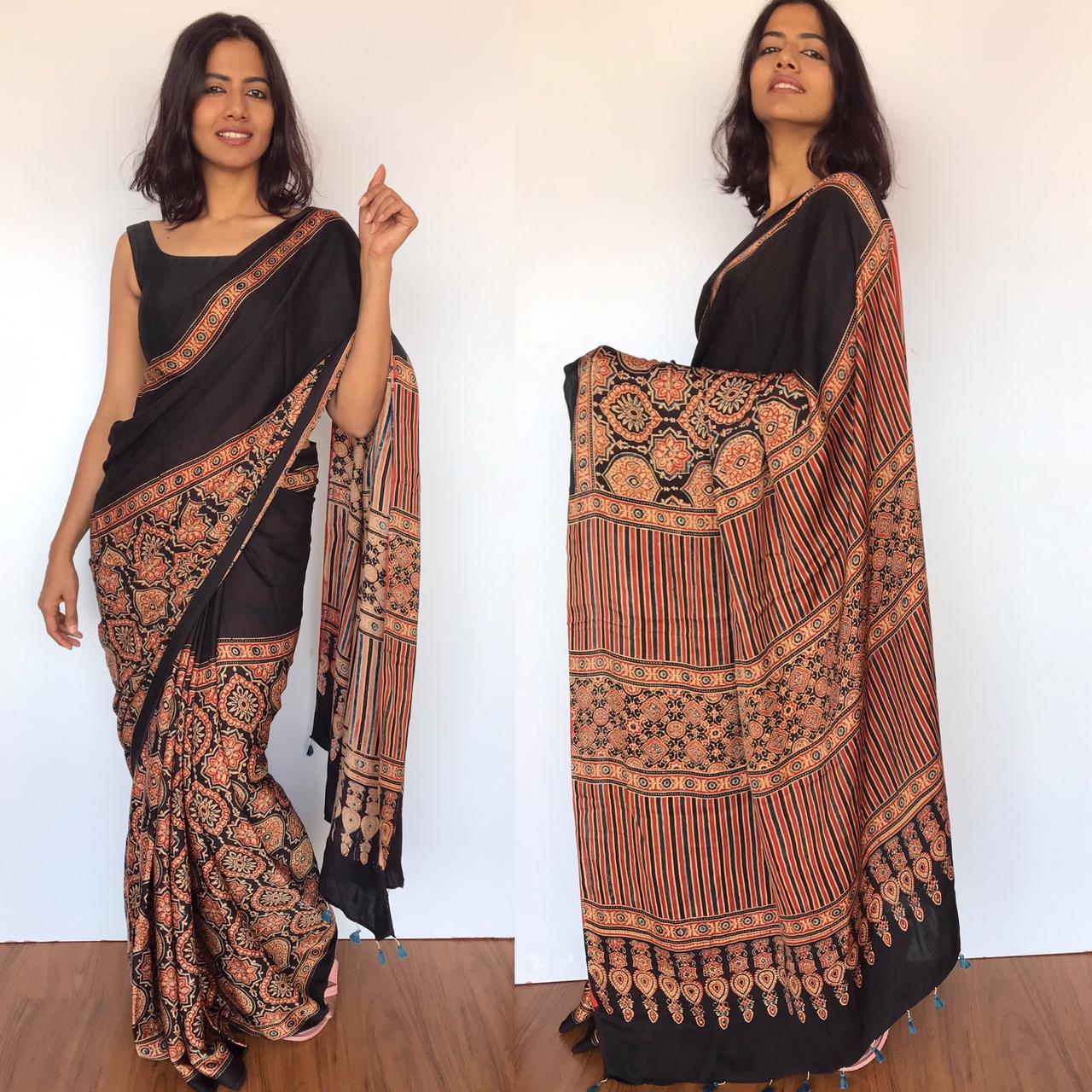Ageless Block Print Art – The legacy of Ajrakh Modal Silk Sarees

Our country is always known for its impeccable traditions and the undivided traditions among the various states. India can be defined by many adjectives like warmth, colorful, noisy, entertaining, etc. Some features that give impartiality to these synonyms and that glorifies our nation are our festivals, Bollywood, big fat weddings, and our textile industry. Clothes and the process that goes into making them are very distinctive in each part of the globe. In India, block art painting has been one of the intense yet rewarding works for many years. Weavers from the ancient era have been practicing and preserving this culture for ages, though it has not got the credit it deserves. We are going to be looking down at how Ajrakh – one of the oldest block art prints came into existence and the Ajrakh Modal silk sarees are becoming a well-known vogue in the fashion world.
What exactly is the art form – Ajrakh?
Inspiration for our clothing stocks has been adapted from either the western world appearances or some of the olden records of some of the wonderfully forgotten designs are dusted off and recreated into some iconic looks. Ajrakh modal silk sarees is one of the treasured styles that have originated around 3000 years ago.
The word Ajrakh has many unique denotations. The primary color of the art is blue as it happens to be one of the meanings of the word Ajrakh in the Arabic language. Many people are not aware of such a block art form as it remains hidden in the corners of India. But recently, many brands like Mirra Clothing are thriving to keep this work of art blooming.
How were the days of yore for the art form?
The story of how the Ajrakh paintings were born has many variations and involves many natives too. They have a very deep Sufism connection and this block printing art was mooted from Sindh. Here the tribal community called Khatri weavers were involved in the practice of the Ajrakh art form. Later they migrated and settled down in the state of Gujarat. Their run-through for the block art was again resumed and its popularity ran through the streets of Rajasthan and the rest of North India.
Weaving process
In the earlier times, this ajrakh block art print was utilized in clothes made for men too. So you could find it in turbans, shawls and it was even presented to new bridegrooms as a good luck tradition. It was in the year 1970, the making of sarees using this art fabric was introduced into the world.
The manufacturing process of ajrakh clothes is a very complicated and monotonous procedure. There are multiple levels of printing the motifs and the color palette on the fabrics. After that the cloth is washed several times in a particular dye solution, it is made to dry for two days before dipping it to the next dye solution. This repeating of similar steps can make the roots of the weave to be stronger and much ironic than excepted. It takes many days to prepare one complete clothing piece but the entire method involves elements from basic surroundings.
One important compound that is necessary at that points is the usage of water. Even the iron and mineral content in the water can make or destroy the fabric. That is why the Dhamadka village was a big source of water content in the initial stages.
The blocks are beautifully carved in a manner to showcase a dovetailing upshot and they are made out of Acacia Arabica trees found in the interior regions of Sindh. The gloomiest part is only one family who is expertise in the creation of these blocks is currently keeping the art alive.
The colorful role of the block art
The shades play a significant role in the ajrakh block art. Each color has a very special meaning to it but the primary colors that one can find on any ajrakh modal silk sarees are blue, white, red, and black. The interesting fact here is that all these dyes are regular and are obtained from the most organic means. For instance, the blue-colored dye is extracted neatly from the wonderful indigo plants. Red dye is taken out of the first natural dye ever found – the Alizarin compound. Black dye is gained from dark coal millets or molasses and the trick here is to mix this paste with some grounded tamarind powder to get a thicker, matte finish.
Each of these hues also benefits the wearer by raising or decreasing the temperature of the body according to climatic conditions. Still, the traditional process of printing square-shaped blocks on the fabric is still maintained. The same rules apply to the perception of motifs. Most of the motifs include the usual motifs of nature but the one kind that makes it commonly different is the shape of a trefoil that represents the combination of water, sun, and earth.
Conclusion
Before the recognition of this art form was known to the world, the experts of the ajrakh form found it difficult to maintain the legacy of the art. But thanks to the Indian government, now many proper measures are undertaken to flourish this art.
Mirra Clothing is a fashion pit stop where everyone can find many contemporary clothing options fused flawlessly with non-conventional fabrics that are popular or even lesser-known like Ajrakh. Here you can find numerous choices of Ajrakh modal silk sarees that are made of breathable and comfortable fabrics, just like our other saree collections.




